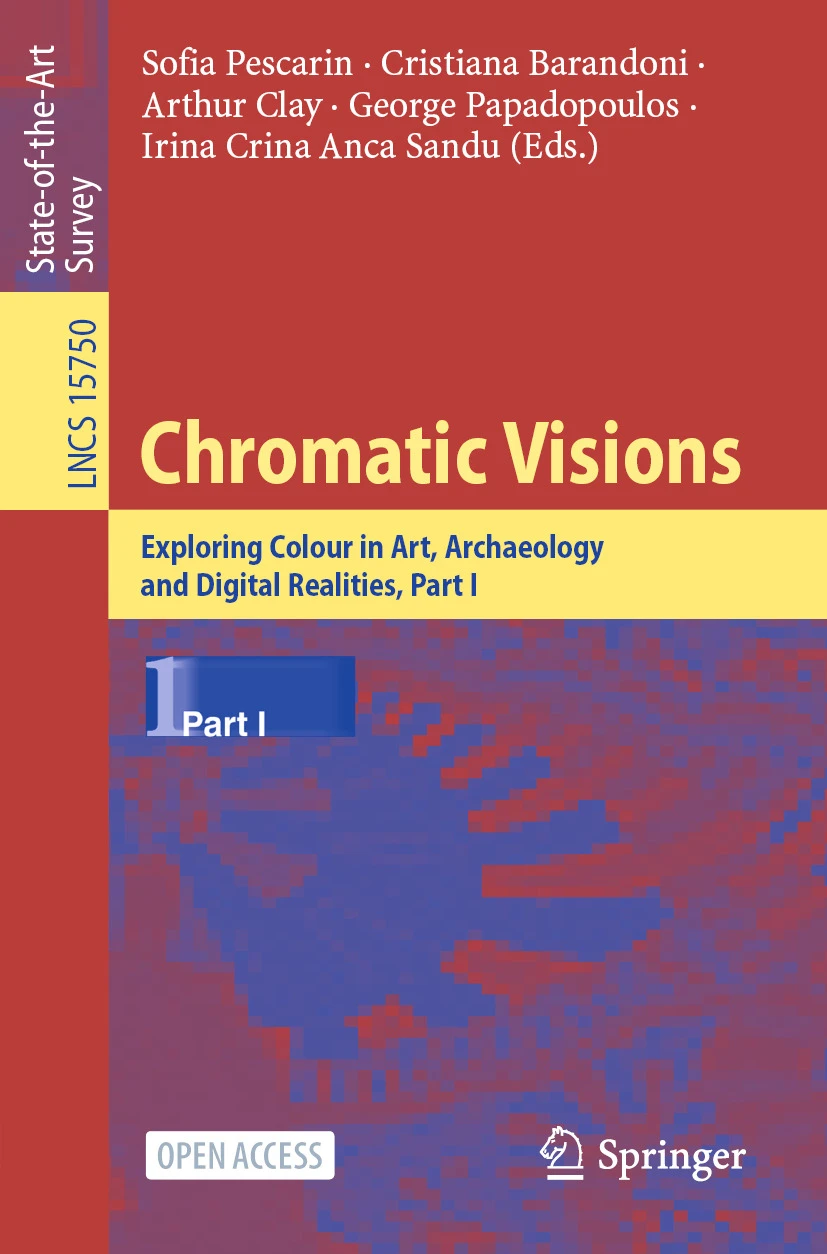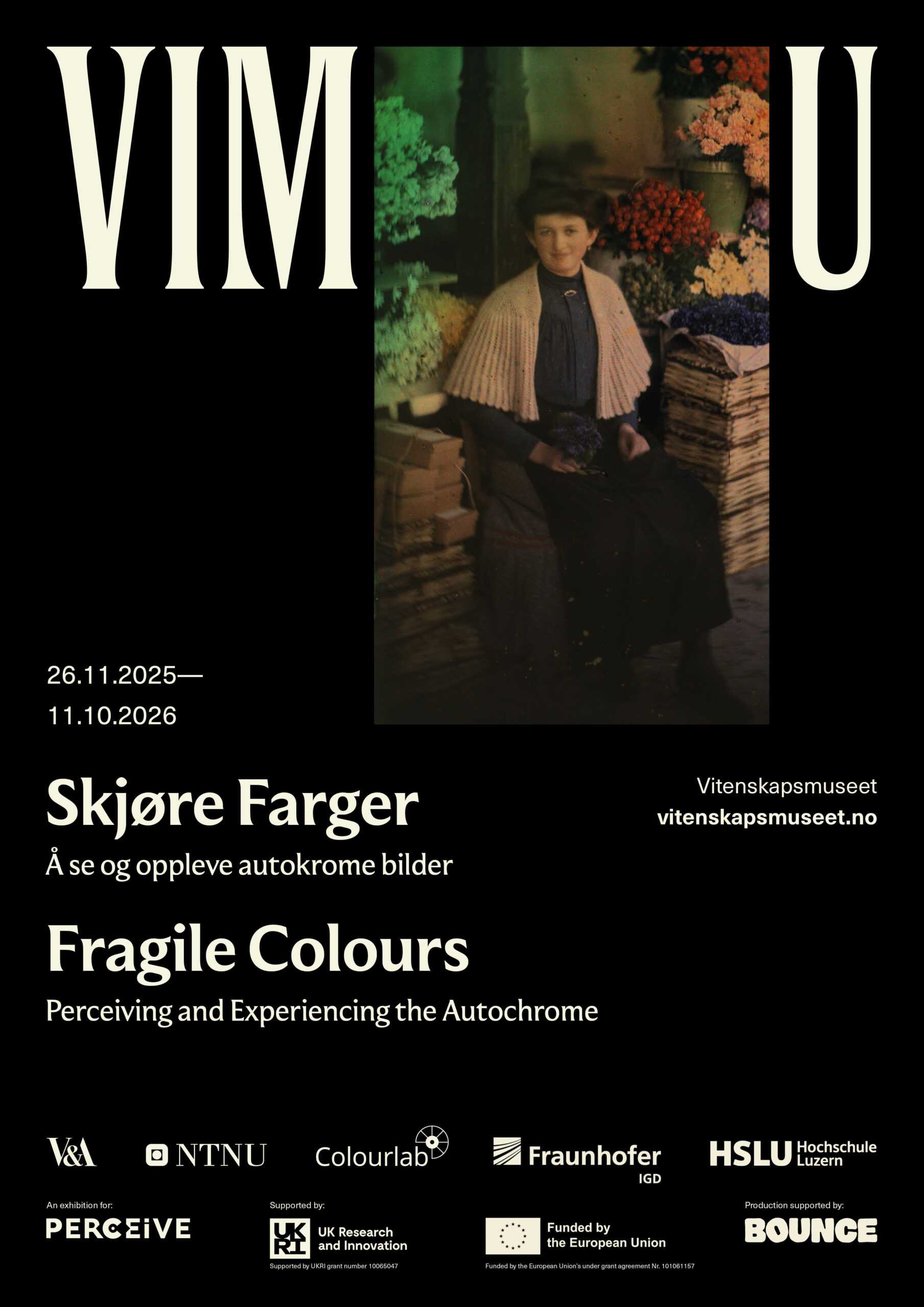Arthur Clay
Dario Lanfranconi
Chiara Gemma Fedon
The Work Group for Born Digital Art within the PERCEIVE project undertook comprehensive studies to delve into the nuances of digital artworks, with a specific focus on color and transparency. The team aimed to understand the unique challenges and opportunities associated with born digital art, particularly in migrating important artworks from their original but outdated frameworks to contemporary ones, while maintaining authenticity, and ensuring more long-term preservation. The design of the elements for the Open Space Museum was specifically conceived by the group to accommodate new presentation methods. These methods are aimed at enhancing viewer interaction through innovative engagement strategies for augmented reality environments, ensuring that digital artworks are not only preserved but also presented in ways that enhance their visual and interactive qualities, engaging audiences with new dimensions of artistic expression.
To begin this colorful journey, the work group conducted in-depth studies on the nuances of digital artworks, specifically focusing on color and transparency. This study explored transparency in augmented reality (AR) artworks, examining its role in creating immersive and dynamic experiences. It was found that transparency, involving the manipulation of opacity levels, enables the seamless integration of virtual elements with the real world. In AR, transparency is therefore used by artists to control the visibility and blending of virtual and real elements, providing depth and complexity to their artworks.

Fig.1. Transparency use Table
Examples included “Ecce Homo” by Arthur Clay & Ingo Lie, which employs “Transparency Dimensionalization” to create depth and motion, and “Gaza 1:1 – The Name” by Warren Armstrong, using a layering technique to blend semi-transparent writing with a transparent background. “The Coming of a New Dimension” by Arthur Clay explores time and space with varying transparency layers, while “Dante’s Inferno” by Mark Skwarek uses transparency and environmental masking to immerse viewers in a medieval vision of hell. Lastly, “Crystal Coffin” by Lily & Honglei employs “simulated realism,” using 90% translucent glass to mimic real glass.

Fig.2. Changes made for Migration from ab MySQLto C# coded environment.
Transparency in AR is essential for creating engaging, immersive experiences, allowing artists to seamlessly blend virtual and real elements and offering viewers profound depth and interaction. Thus, the study led to the design of the Chroma Elements at the Open Space Museum, which introduces novel presentation methods that enhance viewer interaction, particularly in augmented reality environments. It also allows visitors to playfully explore color blending in both real-world and virtual settings and to experience the relationship between them.

Fig. 3. The original Large Glass and its reproductions from Hamilton and Linde
To continue research and to align with the outcome with the criteria of the PERCEIVE project, a table of best practices regarding a sense of care was created to define best practices by artists in fostering a sense of care. In the context of artworks and digital applications, a sense of care involves creating experiences that evoke concern, empathy, and consideration in viewers and users. This table included an analysis of how different elements such as visual, emotional, interactive, intellectual, and conceptual engagement contribute to triggering a sense of care in the audience. By studying these examples, we as well as artists and developers can derive insights into how it is possible to create impactful and empathetic experiences.

Fig. 4. Table listing the history of the Large Glass and its restorations and reproductions.
To explore maintaining authenticity in reproducing artworks, including digital twins, we examined the history of “The Large Glass” by Marcel Duchamp, focusing on its repairs and reproductions. Artists like Richard Hamilton and Ulf Linde demonstrated how to preserve original artistic intentions while adapting to new contexts. By analyzing these efforts, we developed guidelines emphasizing detailed documentation of the work’s original context, materials, and creator’s intent. This documentation was then instrumental in guiding the creation of digital twins and reproductions for use in the Open Space Museum. This approach ensured us that the then created media respected the original’s essence while incorporating modern technologies, thus supporting a seamless transition of artwork into the digital realm with preserved authenticity and embraced innovation.
To select the AR case study artworks, a meticulous process was employed to capture a wide range of artistic practices that utilize transparency to enhance viewer engagement while offering the viewer an impactful experience of the AR genre.
The criteria included:
- Innovation in transparency use
- Demonstrating unique effects on color and visual depth.
- Immersive experiences that seamlessly blend virtual and real elements.
- Clear articulation of artistic intent and context without overstatement.
- Possible to migrate without having to address issues of interactivity or (mesh) animation.
- Availability of the artist and a willingness to collaborate during migration.
This comprehensive approach provided valuable insights into how the genre is articulated using color, helped outline the novelty of AR as an art genre, offered the group guidelines for implementing a methodology for migration of works across platforms, and inspired the creation of further immersive, empathetic, and authentic digital experiences.

Fig. 5. Images of selected case study AR artworks.
Based on the knowledge obtained from the study of transparency and color in AR artworks, we designed the Chroma Tower accordingly to act as a demonstrator of the effects of transparency on colors and color mixing. The tower consists of vertically stacked blocks, each fitted with colored transparent glass panels that serve as color filters for sunlight. As sunlight shifts throughout the day, it filters through these panels at various angles, creating a diverse palette of colors. Visitors can manipulate these effects by rotating the blocks, thereby blending different hues such as red and blue to produce purple. This interactive feature not only illustrates the principles of color theory but also offers a unique experience, with the tower’s visual output continually changing based on natural light conditions and visitor interactions.
In connection with the Chroma Tower and to provide visitors access to the collection of AR artworks chosen as case studies, visually prominent AR portals were created. These portals not only offer visitors the opportunity to access the artworks but also enhance the color mixing effects of the Chroma Tower. Additionally, the AR portals are equipped with reflector panels that can be repositioned by moving the portals to reflect and disperse the light stemming from the Chroma Tower, thereby increasing interaction and enhancing the visual impact of the installation over a larger ground area.

Fig.6. Image of the GUI of the Engagement Applications
To complete the experience and actively involve visitors, or Engagement Applications are made available by scanning a QR code placed on the Chroma Tower. One of the applications, titled “PortalPlayer” can be used to access the AR artworks without the need to scan in the QR at the AR Portals and the second application titled “ColorBlender” allows visitors to contribute to the artworks by using profile Selfies as textures, which are added as assets within the virtual environment. These assets therefor feature the faces of participants, which are animated in a simulation resembling a windstorm, swirling around like leaves on the ground, enhancing the interactive and immersive aspect of the exhibition.
Conclusion
The Work Group for Born Digital Art within the PERCEIVE project conducted comprehensive studies to delve into the nuances of digital artworks, with a specific focus on color and transparency. This study aimed to understand the unique challenges and opportunities associated with born digital art, particularly in migrating important artworks from outdated frameworks to contemporary ones while maintaining authenticity and ensuring long-term preservation.
To align with the PERCEIVE project’s criteria, a table of best practices regarding fostering a sense of care was created, analyzing visual, emotional, and interactive engagement to create empathetic experiences. Additionally, a study examined maintaining authenticity in reproducing artworks, including digital twins, by analyzing the history and reproductions of Marcel Duchamp’s “The Large Glass” was undertaken, leading to guidelines emphasizing detailed documentation of original contexts, guiding the creation of digital twins that respect the original’s essence while incorporating modern technologies.
Based on these insights, the group designed elements for the Open Space Museum to accommodate new presentation methods that enhance viewer interaction through innovative engagement strategies for augmented reality environments. Known as the Chroma Tower and the AR Portals, these Open Space Museum elements provide access to selected case study artworks and allow visitors to explore color blending, enhancing interaction choices. The engagement applications connected to these elements further involved visitors by allowing them to interact with real-world elements on a digital level in virtual space, offering the chance to contribute to the artworks with profile selfies, enhancing the interactive and immersive aspects of the exhibition.



